Sustainability Commitments


Our commitments are proof of our determination, our values and our responsibilities to society. They are reflected in the 5Cs:
- Customer growth – Innovate to preserve resources and protect health
- Climate – Contribute to carbon neutrality
- Competencies – Mobilize proud and committed employees, who embody our purpose
- Cash – Operate efficiently and reduce our footprint
- Communities – Be engaged and responsible locally in our environment
-
A future to build togetherDiscover
Our sustainability policies and programs are based on six major areas of commitment:
- Occupational Health and Radiation Protection
- Occupational Safety
- Environment and Biodiversity
- Social Involvement and Stakeholder Relations
- Innovation
- Ethics and Transparency
-
Our latest CSR ReportDiscover
Protecting our people and neighbours
Safety is foundational to our culture and encouraged from the start. We constantly strive to improve our initiatives through risk management, training, monitoring, safety standards, and good practices.
Orano maintains its safety certifications every year as well. In 2008, the McClean Lake mill became the first uranium operation in North America to achieve OHSAS 18001 certification for its occupational health and safety management system, and it has now transitioned to the ISO 45001 standard.
Radiation Protection

Orano Canada ensures that employees are protected from radiation exposure at the McClean Lake mill. In 2020, third-party analysis of radiation exposure, as measured by personal dosimeters on workers, found that the average radiation dose for McClean Lake employees was 0.66 mSv/year (less than half the typical annual background exposure for Canadians, 1.8 mSv/year). The results are shared with workers, regulators, and Orano, to ensure we are doing our part.
Emergency Response Team
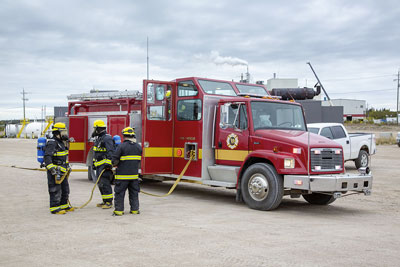
Members of Orano's Emergency Response Team (ERT) go above their regular duties to train, study and prepare for emergency response situations. The McClean Lake ERT competes at the annual Saskatchewan Mining Association's Emergency Response Mine Rescue Competition. They are fully trained in firefighting, first aid/CPR, and rescue operations.
Health & Emergency Facilities

Due to the remote location, McClean Lake is equipped with emergency response equipment and medical facilities with a nurse or emergency medical technician always available. Air ambulance services are available 24/7.
Protecting nature in all its forms
Orano’s McClean Lake operation first obtained the ISO 14001 certification in 2000, and our Exploration department first achieved ISO 14001 certification in 2004. We also fund independent monitoring through several community programs in partnership with the province of Saskatchewan and our joint venture partner, Cameco Corporation.

OPERATIONAL MONITORING
Environmental monitoring at Orano’s operations is constant, through all site stages. We are committed to keeping our impact as low as reasonably achievable.
Monitoring at the McClean Lake Operation
AIR
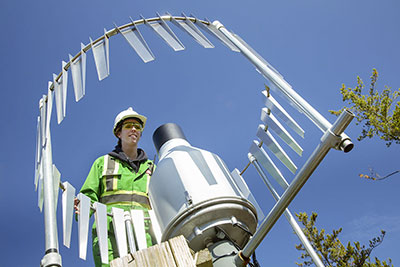
At McClean Lake’s mill, air flow and ventilation are primary considerations, and are constantly monitored to immediately address any potential air quality issues. We also monitor the air quality nearby, ensuring emissions are below regulatory limits. One of nuclear energy's biggest advantages is its small amount of greenhouse gases, starting with the limited CO2 emissions during uranium concentrate production.
TAILINGS
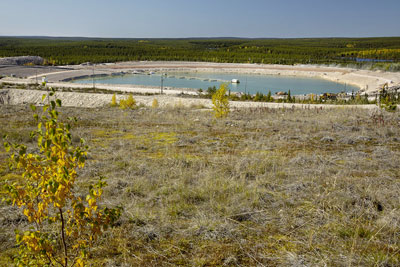
Tailings – treated waste products from milling ore – are stored in the JEB Tailings Management Facility (TMF), which has been engineered to minimize adverse environmental effects.
WATER

Orano emphasizes surface water quality within its environmental program. At McClean Lake, the water used to process ore, as well as other water sources that come into contact with our mine area, require three-stage treatment:
- Hydroxide Precipitation: High pH removes heavy metals.
- Radium Arsenic Removal: Low pH removes radium, arsenic and molybdenum.
- Radium Polishing: The pH is made nearly neutral to reduce Total Suspended Solids (TSS) prior to discharge.
Treated water (Treated Effluent) is tested to make sure it meets all regulatory quality requirements. Once ready, it is released into a central system that controls and manages the flow into the east basin of McClean Lake, and eventually flows to Wollaston Lake.
WILDLIFE

We know that wildlife is often a key part of survival for northern people, which is why we have done extensive baseline wildlife monitoring around the McClean Lake operation. We monitor wildlife activity around the site and it is a priority to protect it along with their habitat; for example, bears that find their way in the camp are sedated, transported, and released elsewhere.
INDEPENDENT MONITORING PROGRAMS
Community environmental monitoring programs sample water near Athabasca Basin settlements and show that the surface water quality is meeting all provincial objectives. We do our part to maintain excellent water quality in the region.
YA’THI NÉNÉ ENVIRONMENTAL MONITORING PROGRAM
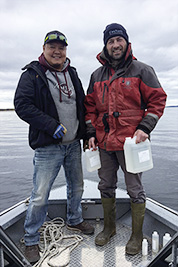
From 2000 to 2017 the Athabasca Basin Communities of Black Lake, Stony Rapids, Fond-du-Lac, Camsell Portage, Uranium City and Wollaston/Hatchet Lake performed community-based monitoring of water, sediment, fish, plants, wildlife, and air quality near their communities with assistance from Canada North Environmental Services and funding provided by Orano and Cameco. Today, under their new Ya’thi Néné collaboration agreement with Orano and Cameco, the Athabasca Basin communities’ Ya’thi Néné program is focused on Traditional Foods Studies.
-
The Ya’thi Néné Environmental Monitoring and Traditional Foods Studies ProgramsRead more
NORTHERN SASKATCHEWAN ENVIRONMENTAL QUALITY COMMITTEE (NSEQC)
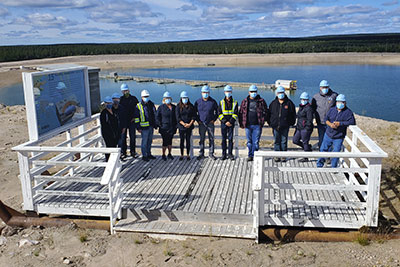
The NSEQC, formed in 1995, enables northerners to learn more about uranium mining activities, see environmental protection measures, and understand the socio-economic benefits that are gained. NSEQC members from 32 northern communities are nominated by their band or municipal agreements, and meet with representatives from the provincial government, the Canadian Nuclear Safety Commission, and the uranium mining industry, gathering information and answers for their home communities.
-
The NSEQCRead more
Eastern Athabasca Regional Monitoring Program (EARMP)
The EARMP is an independent environmental monitoring program funded by the Province of Saskatchewan, in partnership with Orano Canada and Cameco. The EARMP is comprised of a community program, ensuring and monitoring the safety of traditionally harvested foods, and a technical program, designed to provide long-term environmental data to identify downstream impacts of uranium mining and milling.
-
Program results and more information can be found on the EARMP websiteRead more
DECOMMISSIONING ENVIRONMENTAL STUDIES
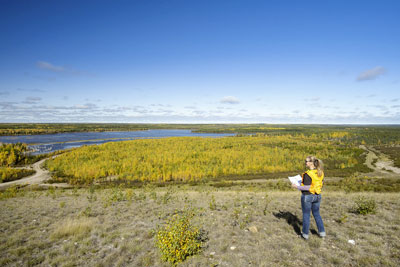
At Cluff Lake, annual inspections, biennial geotechnical surveys, and ongoing monitoring show that the site is meeting performance objectives. Orano first received decommissioning environmental assessment and licensing approvals for the site from regulatory agencies in 2004 and was granted a renewal of its decommissioning licence in 2019. After assessments of many environmental risk criteria, the site is safe, stable, and available for traditional activities like hunting, picking berries, and fishing.
Respecting regulations and commitments
The Saskatchewan Ministry of Environment provides the provincial approval to operate the McClean Lake operation, which must be renewed by October 31, 2023. This approval authorizes Orano to operate facilities at the mill, as well as further equipment like sewage treatment facilities, air quality monitors, incinerators, dangerous goods storage, and more.
Incident Notification Report
In the interest of transparency, Orano updates our Incident Notification Report for events with a potential impact beyond our sites. The report notifies the public of incidents, remedial actions undertaken, and their potential effect on health, safety, and the environment.
Delivering uranium concentrate sustainably
To be sustainable, Orano must produce at a competitive cost and achieve production targets for timely delivery, even in a challenging market. In 2019, Orano’s share of Saskatchewan uranium production was:
- Northern scholarships Orano provides scholarships for post-secondary students from northern Saskatchewan each year. We have been contributing to the education of northern students for more than 40 years. The current Application Form and Information is available here.
- Community investment Orano’s community investment pillar is primarily focused on community initiatives and organizations in the regions near our operations and activities or where our employees reside.
- Incident notification This information notifies the public of incidents that may be important to them, remedial actions undertaken, and their potential effect on health, safety and the environment.
